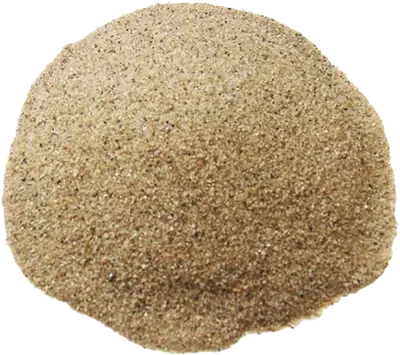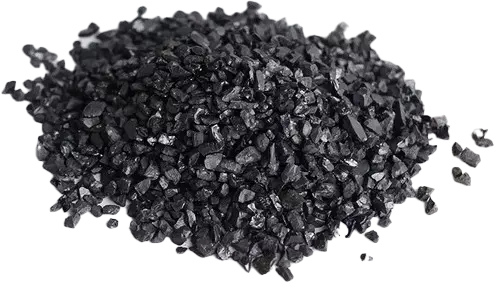In water treatment systems, quartz sand filters and activated carbon filters are two common and essential devices widely used in various water purification tasks. Although they may look similar, their working principles, filtration effects, and applicable scopes differ significantly. By comparing these two types of filters, we can better understand their roles and make more informed choices in practical applications.
Overview of Quartz Sand Filters
Quartz sand filters primarily remove suspended solids, sediment, and large particulate impurities from water through physical filtration. Their working principle is based on the dense arrangement of quartz sand media. As water flows through the quartz sand layer, larger solid particles are intercepted and trapped, thereby reducing water turbidity.

1. Filtration Mechanism of Quartz Sand Filters
The particle size of quartz sand media typically ranges between 0.5-2 mm, offering high hardness and stability. This ensures that the quartz sand does not easily break during backwashing or forward washing, maintaining long-term water purification effectiveness. Quartz sand filters are particularly suitable for removing particulate matter and suspended solids, with strong interception capabilities for larger solid impurities.
2. Applications of Quartz Sand Filters
Quartz sand filters are commonly used for water turbidity removal, softening, and pre-treatment before reverse osmosis. They are widely applied in the treatment of surface water, groundwater, and industrial water, especially for removing sediment, colloidal substances, and other solid particles. With a long service life, they are ideal for large-scale water treatment systems.
Overview of Activated Carbon Filters
Unlike quartz sand filters, activated carbon filters primarily function through adsorption to remove dissolved organic matter, heavy metal ions, and certain chemical pollutants from water. The surface of activated carbon contains numerous micropores, which provide it with strong adsorption capabilities, enabling it to effectively adsorb organic pollutants and other dissolved substances in water.

1. Filtration Mechanism of Activated Carbon Filters
Activated carbon filters remove harmful substances through adsorption. As water flows through the activated carbon layer, organic matter, pigments, odors, heavy metal ions, and other pollutants are adsorbed by the micropores in the activated carbon. This process relies on the surface area and micropore structure of the activated carbon, allowing it to efficiently remove dissolved contaminants.
2. Applications of Activated Carbon Filters
Activated carbon filters are widely used in drinking water purification, wastewater treatment, and specific industrial water treatment. Particularly in scenarios requiring high water quality, activated carbon filters can remove organic pollutants and chemical substances such as chlorine and volatile organic compounds (VOCs), providing clean and safe water.
Comparison Between Quartz Sand and Activated Carbon Filters
Although quartz sand filters and activated carbon filters may look similar and are both used in water treatment, their filtration principles, applicable scopes, and effects have distinct characteristics. Below is a detailed comparison:
1. Differences in Filtration Mechanisms
Quartz Sand Filters: Primarily remove suspended particles, sediment, and other insoluble solid impurities through physical interception. Their filtration efficiency depends on the density and particle size of the quartz sand.
Activated Carbon Filters: Rely on adsorption to remove dissolved organic matter, odors, and chemical substances. Their filtration efficiency depends on the micropore structure and adsorption capacity of the activated carbon.
2. Types of Pollutants They Address
Quartz Sand Filters: Suitable for removing large suspended particles, sediment, and colloidal substances, mainly targeting insoluble solid matter.
Activated Carbon Filters: Primarily used to remove organic matter, odors, heavy metal ions, and chemical pollutants, making them ideal for water sources with significant organic contamination.
3. Service Life and Maintenance
Quartz Sand Filters: Due to their high hardness and wear resistance, quartz sand filters have a long service life and are not easily damaged during backwashing. Maintenance is relatively simple, requiring regular backwashing to restore filtration efficiency.
Activated Carbon Filters: Activated carbon has a shorter service life, as its adsorption capacity gradually decreases with the accumulation of pollutants. Therefore, activated carbon needs to be regularly replaced or regenerated, resulting in higher maintenance costs.
4. Cost-Effectiveness
Quartz Sand Filters: With low material costs and a long service life, quartz sand filters have lower initial investment and long-term maintenance costs, making them suitable for large-scale water treatment applications.
Activated Carbon Filters: Due to the higher costs of replacement and regeneration, activated carbon filters have higher long-term operational costs. However, they offer finer filtration and are particularly suitable for applications requiring high water quality.
Combined Use
In many applications, quartz sand filters and activated carbon filters can be used together to achieve more efficient water purification. The quartz sand filter is placed at the bottom layer to intercept large particles, while the activated carbon filter is placed above to remove organic matter and other dissolved substances through adsorption. When used together, their functions complement each other, achieving more comprehensive water purification.
Conclusion
Quartz sand filters and activated carbon filters play distinct roles in water treatment. Quartz sand filters are suitable for removing large particles and suspended solids, offering a long service life and low maintenance costs. Activated carbon filters, on the other hand, remove organic matter, odors, and chemical pollutants through adsorption, making them ideal for high-quality water purification. Combining the two can leverage their respective strengths, achieving more comprehensive and efficient water treatment. Therefore, selecting and pairing quartz sand filters and activated carbon filters based on specific water quality needs is key to ensuring effective water treatment.

